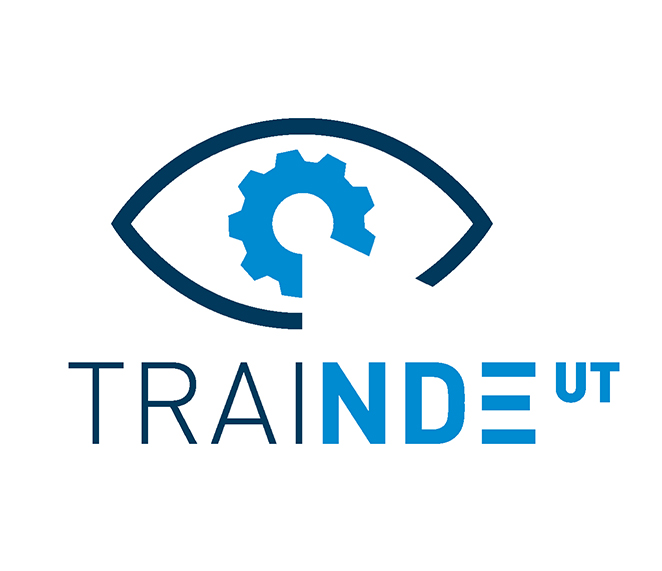May 2019
Patrick Pichard and Bernard Trehorel had an early access to TraiNDE UT, and we would like to share their feedback with you.

Hello Patrick Pichard, and thank you for your participation in the beta testing of TraiNDE UT. First of all, how would you describe this product in a few words?
In a few words is difficult, but let's try!
TraiNDE is a perfectly realistic testing simulation software. Composed of a computer with two screens representing on the one hand the device and on the other hand the blocks and components to be checked, dummy probes located in real time allow you to calibrate the probe and the sensitivity by scanning these blocks and the components to be tested.
The databases of parts with defects are mainly based on the results of actual testing.
The inspection workflow is strictly identical to that which would be carried out with physical equipment (ultrasonic devices, calibration blocks and real components with defects).
Can you please describe briefly your background and experience in NDT?
NDT started in 1977 for me, as a service provider.
In 1981, I became mainly an ultrasound trainer.
In 1987, I joined a hardware manufacturer to define control solutions and market them.
In 1992, I created with partners Logisonic, a company specializing in ultrasonic and Eddy Current testing machines.
We then participated in GIE (Economic Interest Grouping) Multi2000, which became M2M in 2003, where I was in charge of general management for shareholders from 2006 to 2018.
Now retired, I work as a freelancer as an NDT consultant.
You have been using TraiNDE UT for several days, what has caught your attention the most?
It enables several trainees, as well as the trainer, to work on the same exercise, allowing everyone to receive the same explanations and to apply them in real time to their system. And this even if the trainer is at a distance.
The exercises can be customized, allowing the trainer to create practical exercises to follow the progress of the course as closely as possible.
TraiNDE is therefore the ideal tool for training, it requires no material maintenance and it can be enriched by specific parts or methods.
Thank you for your participation and feedback.

Hello Bernard Trehorel, and thank you for your participation in the beta testing of TraiNDE UT. First of all, how would you describe this product in a few words?
Quick to learn, impressive realism, practical, scalable, in line with expectations.
Can you please describe briefly your background and experience in NDT?
NDT started in October 1982 for me, after training in RT, UT, PT and MT at IFACAP in Seclin (France, 59), I started with RT for nearly a year and then I switched to UT.
At the end of the construction of the nuclear park I continued my experience in maintenance by unit shutdown.
In 1991, after three years of experience at the EDF research center, I passed my UT3.
Thereafter I continued as an intervention manager on electro-nuclear sites undergoing maintenance.
In 2010, I joined DEKRA as head of the Limoges (France) division (15 controllers).
And in July 2014, I created C2TO, a company specialized in NDT training.
You have been using TraiNDE UT for several days, what has caught your attention the most?
The range of possibilities in terms of evolutionary exercises in learning and the fact that it is representative of an inspection with a UT device.
As a training provider, have you identified cases for which TraiNDE UT would facilitate your teaching, Or allow you to do things that you cannot today?
It allows for a faster practical application in the training program. It also makes ultrasound less abstract at the beginning of the training. The verification and calibration phases using the different blocks are put to good use.
How do you imagine that TraiNDE UT can coexist with existing equipment (wedges, devices, probes)?
For me, TraiNDE UT is part of the training phase during the first weeks of training. It allows the trainees to get used to the A-Scan while visualizing the ultrasound path through the cross-section view.
